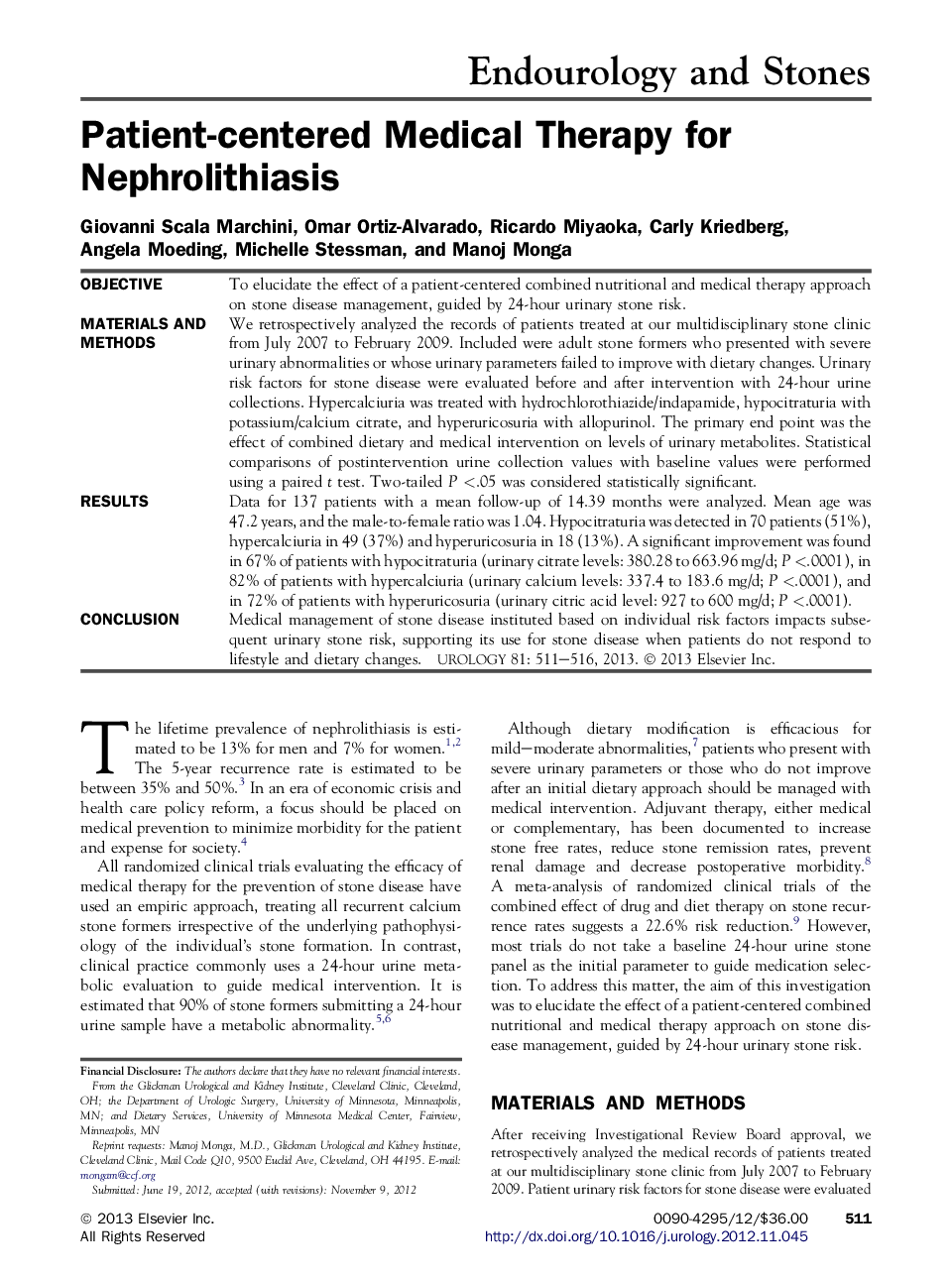| Article ID | Journal | Published Year | Pages | File Type |
|---|---|---|---|---|
| 6167512 | Urology | 2013 | 6 Pages |
ObjectiveTo elucidate the effect of a patient-centered combined nutritional and medical therapy approach on stone disease management, guided by 24-hour urinary stone risk.Materials and MethodsWe retrospectively analyzed the records of patients treated at our multidisciplinary stone clinic from July 2007 to February 2009. Included were adult stone formers who presented with severe urinary abnormalities or whose urinary parameters failed to improve with dietary changes. Urinary risk factors for stone disease were evaluated before and after intervention with 24-hour urine collections. Hypercalciuria was treated with hydrochlorothiazide/indapamide, hypocitraturia with potassium/calcium citrate, and hyperuricosuria with allopurinol. The primary end point was the effect of combined dietary and medical intervention on levels of urinary metabolites. Statistical comparisons of postintervention urine collection values with baseline values were performed using a paired t test. Two-tailed P <.05 was considered statistically significant.ResultsData for 137 patients with a mean follow-up of 14.39 months were analyzed. Mean age was 47.2 years, and the male-to-female ratio was 1.04. Hypocitraturia was detected in 70 patients (51%), hypercalciuria in 49 (37%) and hyperuricosuria in 18 (13%). A significant improvement was found in 67% of patients with hypocitraturia (urinary citrate levels: 380.28 to 663.96 mg/d; P <.0001), in 82% of patients with hypercalciuria (urinary calcium levels: 337.4 to 183.6 mg/d; P <.0001), and in 72% of patients with hyperuricosuria (urinary citric acid level: 927 to 600 mg/d; P <.0001).ConclusionMedical management of stone disease instituted based on individual risk factors impacts subsequent urinary stone risk, supporting its use for stone disease when patients do not respond to lifestyle and dietary changes.
